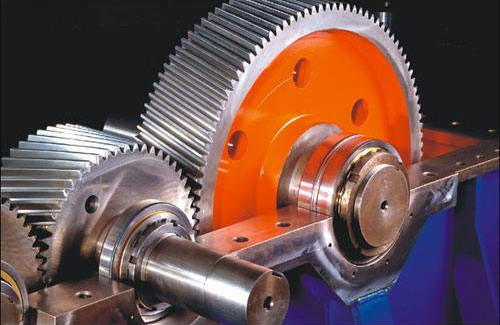Helical gear is favored in diverse applications due to their ability to transmit motion and power efficiently between parallel or crossed shafts. The efficiency of helical gear can vary significantly based on their design, material selection, manufacturing quality, and the specific conditions under which they operate. By conducting a comparative analysis of helical gear efficiency across various applications, we can highlight the impact of these factors and identify areas for optimization. Applications to consider include automotive transmissions, aerospace drivetrains, industrial machinery, and renewable energy systems.

Automotive Transmissions
- Efficiency Range: Typically, 94%-98%.
- Factors Influencing Efficiency: Material selection, precision manufacturing, and lubrication quality. Automotive helical gears is often made from high-grade alloy steels and undergo advanced heat treatment processes to enhance strength and wear resistance.
- Challenges: Balancing the need for high power transmission with requirements for compactness, low noise, and efficiency. The operating environment is characterized by wide temperature ranges and varying loads.
Aerospace Drivetrains
- Efficiency Range: About 95%-99%.
- Factors Influencing Efficiency: High-precision manufacturing, advanced materials (e.g., aerospace-grade alloys, composites), and specialized coatings (e.g., DLC coatings) to reduce friction and wear. Aerospace helical gear must also withstand extreme operating conditions and loads without sacrificing efficiency.
- Challenges: Achieving maximum efficiency under the constraints of weight, reliability, and safety standards. Aerospace applications often demand helical gear that can operate efficiently at high speeds and under variable loads.
Industrial Machinery
- Efficiency Range: 90%-95%.
- Factors Influencing Efficiency: Material choice (e.g., cast iron, steel), manufacturing quality, and application-specific design adaptations. Industrial helical gear may be larger and subject to more variable and heavy loads than those in automotive or aerospace applications.
- Challenges: Industrial helical gear need to maintain efficiency over long operational lifetimes with minimal maintenance. They often operate in environments that can be dirty or corrosive, which can impact efficiency.
Renewable Energy Systems (e.g., Wind Turbines)
- Efficiency Range: Approximately 94%-98%.
- Factors Influencing Efficiency: Use of advanced materials and precision manufacturing techniques to handle the variable loads typical of renewable energy applications. The helical gear in wind turbines, for example, must be efficient yet capable of withstanding highly variable wind speeds and directions.
- Challenges: Ensuring high efficiency in systems that are subjected to fluctuating loads and often remote or difficult-to-access locations for maintenance. The focus is also on long-term reliability and durability.
Comparative Analysis Insights
- Impact of Load Conditions: Efficiency tends to decrease under higher load conditions due to increased friction and heat generation. Aerospace and automotive applications, which often operate under higher speeds and loads, have pushed for advancements in materials and lubrication to maintain high efficiency.
- Material and Manufacturing Quality: There is a clear correlation between the quality of materials, precision in manufacturing, and the efficiency of helical gear. Advanced materials and coatings that reduce friction can significantly enhance efficiency.
- Lubrication: Effective lubrication is crucial across all applications to minimize friction and wear, thereby maximizing efficiency. Innovations in lubrication technology, including synthetic lubricants and condition monitoring, play a key role in maintaining high efficiency.
- Application-Specific Design: Customizing the helical gear design to the specific application—considering factors like the helix angle, tooth profile, and surface finish—can optimize efficiency. The challenge lies in balancing these design considerations with cost and manufacturability constraints.
Overall, while the basic principles of helical gear operation remain consistent across applications, the specific demands and operating conditions of each application necessitate tailored approaches to material selection, design, and manufacturing. The ongoing development in materials science, lubrication technology, and precision manufacturing continues to push the boundaries of helical gear efficiency, meeting the evolving demands of diverse applications.
